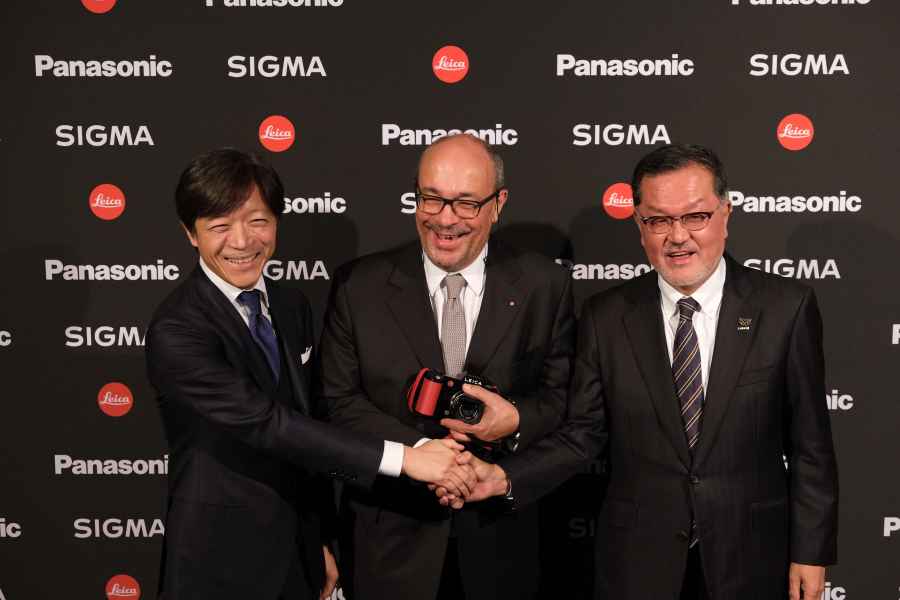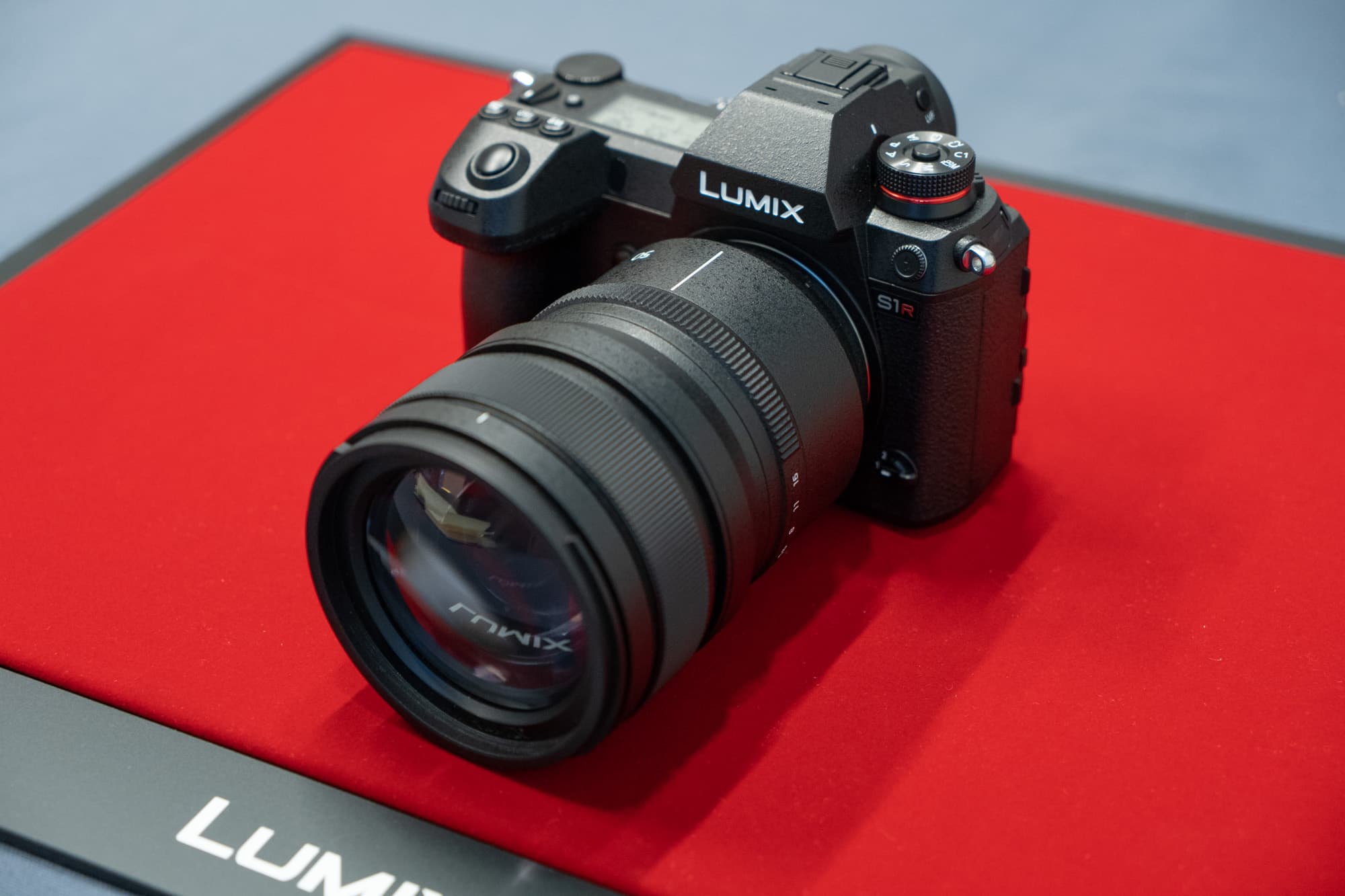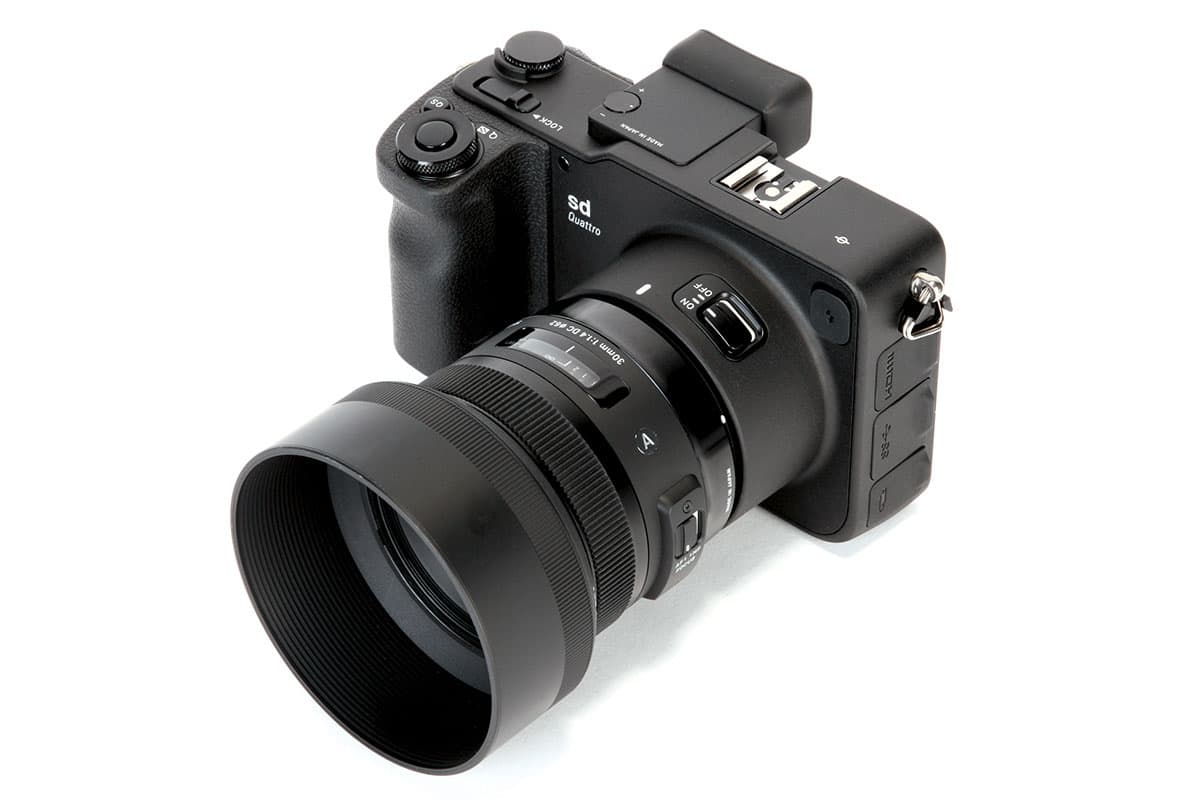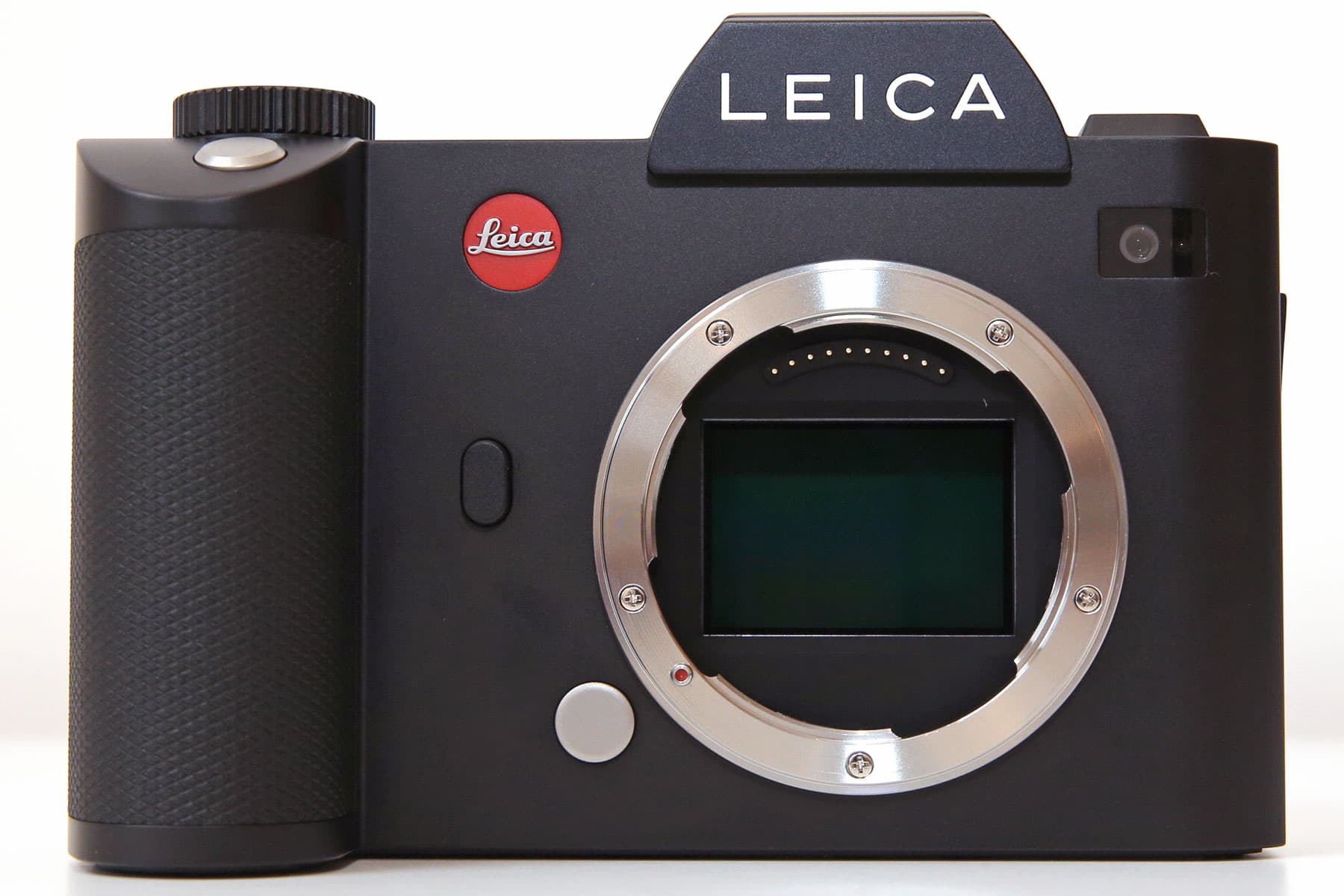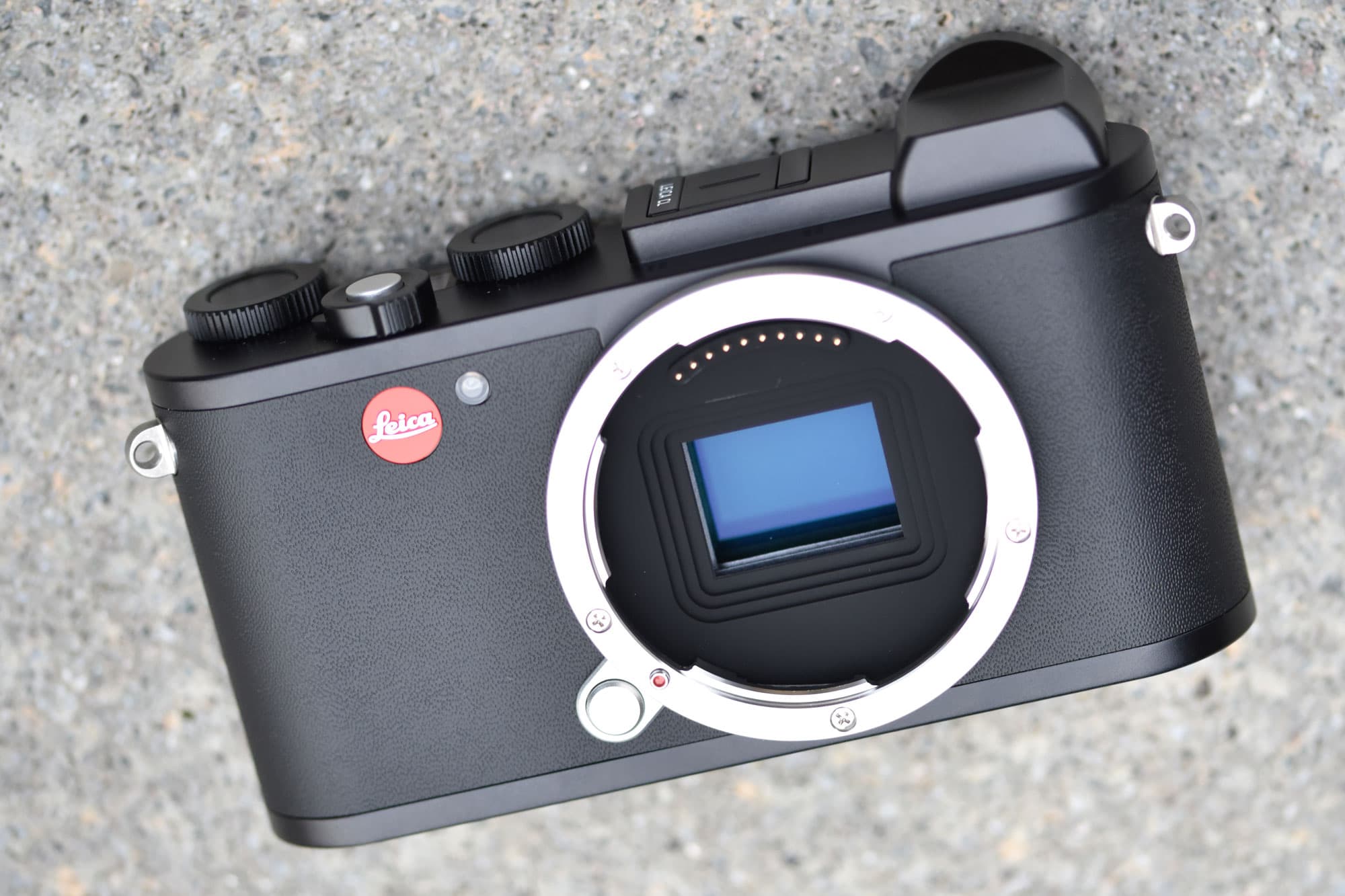
Mr Kazuto Yamaki of Sigma, Dr Andreas Kaufman of Leica, and Mr Junichiro Kitagawa of Panasonic jointly presented the launch of the L-Mount Alliance
In what is surely the biggest news story coming out of Photokina 2018, Leica, Panasonic and Sigma have jointly announced the ‘L-Mount Alliance’ for the production of full-frame mirrorless cameras and lenses. Hot on the heels of Canon and Nikon each introducing their own new full-frame mirrorless systems, this development sees Panasonic and Sigma formally licensing Leica’s existing L-mount, as used by the firm’s full-frame SL and APS-C T systems. This gives Panasonic and Sigma a shortcut into this rapidly-expanding sector of the market, without having to develop an entirely new mount.
Old friends, new partner
Panasonic and Leica already have a long-running relationship that dates back to 2001. Broadly speaking, Panasonic contributes its extensive know-how in electronics, in exchange for a slice of Leica’a optical expertise. Panasonic has used the Leica name on many of its lenses, while Leica has for many years sold fixed-lens compacts that are re-workings of Panasonic Lumix models.
Sigma doesn’t have any pre-existing relationship with either of the other two companies (or at least, not one that’s publicly known), but in reality has worked with both companies for some time. As the pre-eminent third-party lens maker, its involvement in the new group counts as a considerable coup.
What can we expect?
Clearly, both Sigma and Panasonic have joined this alliance to make new cameras and lenses. Panasonic says that it’s developing two new full-frame mirrorless ‘Lumix S-series’ cameras along with three lenses – see the full details in our companion story. The body design is broadly based on the G9, with twin models, the S1 and S1R, featuring 24MP and 47MP sensors respectively. Alongside a 50mm f/1.4 there will be 24-105mm and 70-200mm zooms (most likely f/4 and f/2.8 respectively). Both the cameras and the lenses are due to appear in early 2019.
Sigma says it intends to produce both a full-frame mirrorless camera with a Foveon sensor, and matched lenses based around the L mount early next year. As a direct result, it won’t make any more cameras using its long-running SA mount that was originally designed for 35mm SLRs. Sigma will also now make a much wider range of designed-for-mirrorless lenses (which presumably would also appear in Sony E-mount). However, it will continue to produce new DSLR lenses with the SA mount, to cater for owners of its existing cameras.
Sigma also intends to use its know-how to produce mount adapters that will allow Canon EF and Sigma SA-mount lenses to be used on L-Mount cameras. The potential benefit here in encouraging uptake of the system is considerable, just as the existence of EF adapters encouraged adoption of the Sony E-mount.
In terms of lenses, Sigma will initially produce its highly-regarded Art-series full-frame primes in L-mount, just like it currently does in E-mount. Ultimately though these are SLR lenses with an extended mount added on the back, meaning that they aren’t optimised to exploit the shorter flange distance of the mirrorless format. So from now on, we can expect to see new optics which are specifically designed to take full advantage of the mirrorless architecture. Sigma’s existing DN lenses for APS-C mirrorless, currently made in Sony E and Micro Four Thirds mounts, will also become available in L mount.
As for Leica, it already makes the SLR-like full-frame mirrorless SL (Typ 601) along with six matched lenses – a 16-35mm f/3.5-4.5, 24-90mm f/2.8-4, 90-280mm f/2.8-4, 50mm f/1.4, 75mm f/2 and 90mm f/2. These will all be available to use with Panasonic’s expected new camera at launch, albeit with the considerable caveat that their prices range from £3750 to £5100. In addition, Leica has just announced that 35mm f/2 and 50mm f/2 primes are also about to enter full production, and revealed that 28mm f/2, 24mm f/2 and 21mm f/2 lenses are on their way.
Leica also makes two very different APS-C bodies, the ultra-modern TL2 and the more classically-styled CL, along with seven matched lenses, three zooms and four primes.
What does ‘alliance’ mean?
The three companies may be in ‘alliance’, but strictly speaking they’re not working together. Instead, they will independently make cameras and lenses that they think will meet their customers’ needs. Each also considers that they’re aiming at different segments of the photography market: for instance Panasonic is targeting high-end professional users who work equally with both stills and video. Leica, as per usual, will focus on making products that can’t be made using mass-production techniques, but instead strive to produce exceptional, specially made products that are unconstrained by price. Sigma will produce cameras using with its unique 3-layered Foveon sensor.
The L mount is still owned by Leica, and the firm will control all of its specifications and communication protocols. The aim is clearly to avoid the problems suffered by Micro Four Thirds users, where certain aspects of camera and lens operation aren’t cross-compatible between Panasonic and Olympus (for example, the aperture rings found on certain Panasonic lenses don’t work on Olympus cameras). In contrast, the alliance members have promised that everything will be completely cross-compatible; for example, Dual IS should work perfectly, were you to mount an optically-stabilised Sigma lens on a Panasonic body with IBIS. However, the standard doesn’t extend any further than the mount, which apparently means that the firms won’t adopt the same flash interface. The rationale is that this would make the development of new products and technologies unnecessarily slow.
Leica says that other firms, aside from the current three, could conceivably join the L-mount alliance. However this comes with a proviso – any additional partners would have to be the ‘correct fit’ with the existing members. So while it’s not open house, the door has been left open – or at least ajar – for the likes of Olympus, Tamron or Zeiss to at least ask the question.
The Technical Bit
Leica’s L-mount was introduced in April 2014, on the APS-C Leica T. Even then it was clear that it was large enough to accommodate a full-frame sensor, and this was duly fulfilled with the appearance of the Leica SL in October 2015. Physically, the mount has an internal diameter of 48.8mm, and a flange distance from the sensor to the mount of 20mm. It uses 10 pins for communication between the lens and camera body, and like the Nikon Z mount, has a four-pronged design that enables faster lens changes due to a smaller rotation angle, along with greater robustness. The release button is positioned to the lower right of the lens (from the point of view of the photographer behind the camera), in contrast to the Micro Four Thirds mount currently used by Panasonic, which places the release on the opposite side.
Compared to the Canon RF and Nikon Z mounts, which measure 54mm and 55mm internally, the L mount is distinctly smaller, although it’s still larger than the Sony E mount’s 46.1mm. In principle it should give lens designers a little more leeway to make faster or more exotic optics compared to Sony, without necessarily matching RF and Z in this respect. However, given that the E mount has proven itself perfectly capable of accepting top-notch f/1.4 primes, there’s a question as to how much practical advantage this really brings. It’s worth bearing in mind that any third-party makers will need to produce optics that will work across all systems, so in effect they’ll always be constrained by the E mount anyway. Of course the camera makers themselves have no such worries.
However, one potential advantage is that the L mount allows the firms to make more compact camera bodies compared to Canon and Nikon, along the lines of the APS-C Leica CL. Indeed both Panasonic and Sigma could in principle use the L mount to produce APS-C cameras if they so wished.
The L-mount Alliance – Our Thoughts
Until now, Leica’s L mount has been largely neglected by the mainstream. It’s not that there’s anything wrong with it – clearly it works absolutely fine – but instead that Leica’s mirrorless cameras have simply been beyond the reach of most people, and their market share too small to draw in other lens makers. However, with this announcement, the L mount has been well and truly thrust centre stage. With two heavyweight companies joining Leica, it’s going to have to be taken much more seriously.

Panasonic will be able to deliver much superior image quality to that offered by its well-received Micro Four Thirds G9
The huge question is whether any other camera companies might come on board. The L-Mount could provide a lifeline for Olympus, for example, and enable it to grab a piece of the full-frame action. Maybe even Ricoh could contemplate using it for a future Pentax camera. Third party lens makers like Tamron, Zeiss and Samyang who already make optics for full-frame mirrorless will surely be evaluating very closely whether there’s going to be a market worth chasing here.
One thing’s for sure: the sudden expansion of the full-frame mirrorless sector from one to four major systems promises exciting extra choices for photographers.

